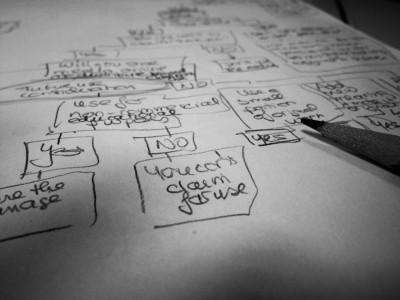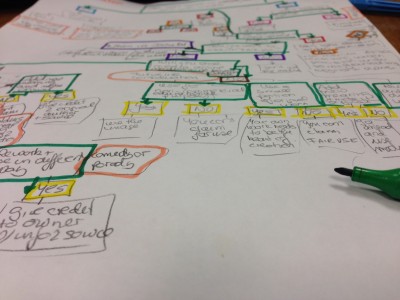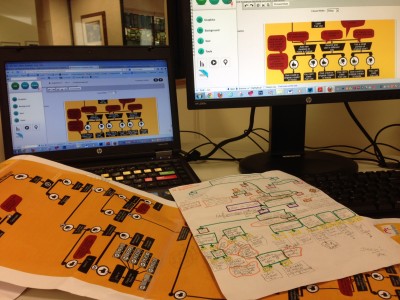Copyright Flowchart: Can I Use It? Yes? No? If This… Then…

It is the responsibility of all educators to model good digital citizenship for their students. Especially when it comes to copyright, plagiarism and intellectual property. The waters are murky. Not being familiar with online digital rights and responsibilities (hey, teachers did not grow up with the Internet being around), educators are wading through uncharted waters (hey, I did not know that I could not just google an image to use. If someone puts it up online it is free for the taking). That does not mean they can close their eyes and pretend life is the same or that the same rules apply to online versus offline use of copyrighted material with their students.
It is every educator’s responsibility to become familiar , observe and model for their students! It is also every educator’s responsibility to not lump in all educational use of copyrighted material under the claim of Fair Use (hey, I am using it in school, I am not making money off of it…) . It is not that simple…
I have written about copyright on this blog many time. Some highlighted posts are:
- Bringing Copyright Awareness to the Surface
- How to Cite Images on Your Blog
- Citing an Image is Not Enough!
- So…You Want to Claim Fair Use?
- So… You Want (Have) To Create Something?
- No! You Can’t Just Take It!
The waters are murky, it is not an easy topic. While there are some clear cut rules about copyrighted material, Creative Commons and Public Domain content, Fair Use in Education are supported by GUIDELINES, not clear cut rules!

Together with the Academic Technology Team at Graded- The American School of São Paulo, the importance of developing a school policy in regards to copyright was discussed. It was not just about developing a policy, but also about:
- raising awareness of copyright issues in a digital world
- bringing relevance to classroom teacher at all levels and subject areas in understanding copyright in digital education spaces and seeing it not just as part of the domain of a ‘technology person”
- helping teachers shift from previous practices regarding copyrighted material in an analog world
- internalize ethical behavior regarding intellectual property available in an online environment
We did our due diligence in researching and gain a better understanding of how other educational organizations were dealing with copyright policy creation, teacher education and support.
Meryl Zeidenberg, the school’s library coordinator, and I started working on taking the gathered research to inform the development, articulation and design of an “If this… Then that…” type flowchart to better support teachers in making decision when using different types of media in teaching, blogging, presentations or projects.
Tools and ideas to transform education. Sign up below.

We have ubiquitous digital access, ease of duplication and distribution of information. We encourage students and faculty alike to write, record, and film for global audiences, thus ushering in a new era of copyright consciousness.
The following infographic chart was developed with an introduction of a New Era of Copyright Consciousness and a suggested simplified flow to follow:
- create your own media (then you don’t have to worry about infringing on someone else’s copyright)
- search for public domain media (then you don’t have to worry about copyright, since it has been voluntarily released or has expired. No worries about giving proper attribution or citing the source either)
- search within the Creative Commons domain (make sure you double check requirements under the license: attribution?, non-derivative? non-commercial? etc.)
- determine if your use of the copyrighted material can fall under Fair Use?
[The flowchart is an attempt in creating a clear route to follow to something that is not as clear cut in nature. If you choose to use it, please do so in the spirit of such disclaimer.]

view larger image
cross posted at langwitches.org/blog
Silvia Tolisano is a Curriculum21 faculty member, author of the book Digital Storytelling Tools for Educators and founder of the Around the World with 80 Schools project. Read more at http://langwitches.org/blog.
